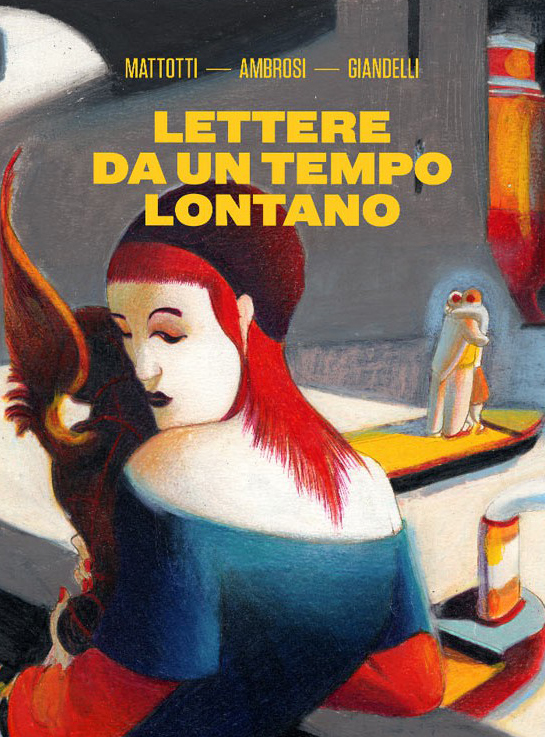Author:
Lorenzo Mattotti
Publishing house:
Logos
Date of publication:
29-03-2019
Six short stories told through the visions of Lorenzo Mattotti and the crystalline texts of Lilia Ambrosi and Gabriella Giandelli. Six unusual ‘letters’ sent from an alienating dimension in which people reflect on life and relationships, ultimately questioning what it means to be human. As in Man in the Window, these stories gently bring to light our frailties and the constant effort to find in feelings, illusions and memories a grip on a life that always seems on the verge of slipping out of our hands. In “After the Flood,” the book’s first and longest story, a woman is stranded at the airport because of a disturbing and fascinating mishap: an invasion of vermilion crabs, so numerous that they turn the runway into a red, self-propelled expanse. While waiting to be allowed to leave, she happens to meet a stranger who tells her about his difficult love for his ailing wife, a love that is strengthened by distance, as well as her own feeling for her man. In the second story, “The Portrait of Love,” told in the space of just two pages, a painter can no longer paint the companion who has stopped loving him, while “Far, Far Away,” follows the journey of a mysterious statuette, which passes from person to person representing freedom dreams, hopes, and passions that each of us struggles to keep, and declining the various meanings of the expression that gives the story its title (a place to start a new life or hide, but also the place where the loved one or the mind of a person who has lost everything disappears). “Letter from a Distant Time,” set in an aseptic, artificial future, is written by a young woman who, aboard a train bound for Kiev, turns to her cartoonist great-grandfather, Mattotti’s probable alter ego, to explain how the world he himself once tried to imagine in his drawings has become. “I wonder how they could amuse themselves in front of these odorless, still, soundless images,” the woman wonders as she looks at an old comic book on video, a question that perhaps Mattotti himself is asking himself as he reflects on his own work. Closing the volume are two more episodes, not found in the first edition of the book, “The Call,” in which the protagonist is a woman who returns to her homeland to visit her sister and nephew, and the short and evocative “Blue Story,” which in four wordless plates captures all the magic of a fleeting encounter.

